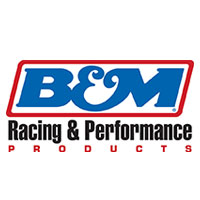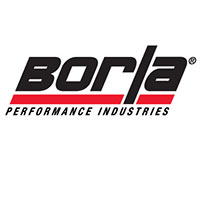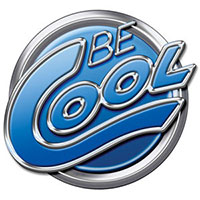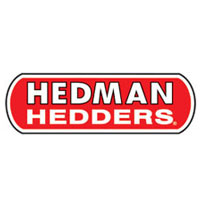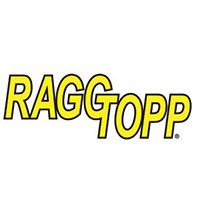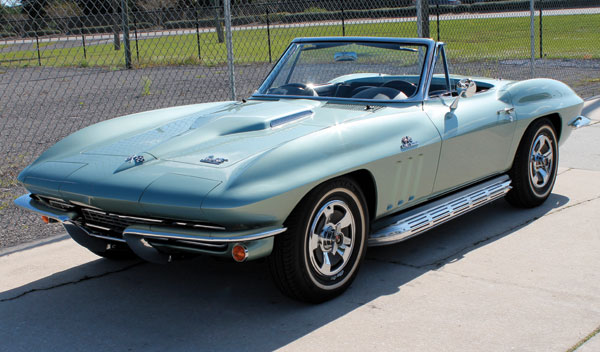Now here was a true-blue American race car. This 1968 Corvette raced at Daytona’s IMSA (International Motor Sport Association) 24-hour race in 1973 and then again in 1975. It was produced as a “standard production” automobile and was driven as such until 1972, when it was involved in an accident.
In 1973, Jerry Thompson purchased the car from Jerry Pennington. Mr. Thompson was a widely recognized race car engineer and national championship race car driver. Thompson set out to redesign and rebuild the Corvette to IMSA race car standards. He chose a 454 cubic inch engine bored .60 over to power this beast. Upon completion, the engine dyno’d out at over 640 hp. Late in the 1973 season, the car was ready for its first race in the G.T. class. What better place to test a “new” car than the 24-hours race in Daytona?
Read more
Posted in Corvette, Featured, Featured, Featured, Featured, Featured, Featured, Featured and Featured
In the wake of the sinkhole at the National Corvette Museum, Fastlane has taken the time to reflect on the iconic cars damaged in the destruction. The latest article spotlights the 1 millionth and 1.5 millionth Corvettes.
The 1-millionth Corvette is a 1992 convertible born around 2pm on July 2nd. This vehicle was modeled after the first Corvette built in 1953 – a convertible clothed in white and stitched with a red interior. Prior to birth, the decision was made was to give it to the Corvette Museum Foundation, with the sale of the “one-millionth plus one” Corvette to be auctioned with the proceeds going to the National Corvette Museum.
Read more
Posted in Corvette, Featured, Featured, Featured, Featured, Featured, Featured, Featured and Featured
Construction crews at the National Corvette Museum have recovered the 1984 PPG Pace Car from the facility’s sinkhole, making it the fifth vehicle to be extracted. Unfortunately, the car was chopped by a large slab of concrete, and is in worse shape than any of the four vehicles extracted before it.
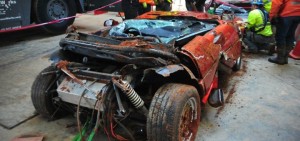
Read more
Posted in Corvette, Featured, Featured, Featured, Featured, Featured, Featured, Featured and Featured
Vehicle extraction efforts at The National Corvette Museum had a lucky break today, when construction crews were able to resurrect the Millionth Corvette from the depths of the facility’s sinkhole.
At first, construction crews had no intention of pulling the Millionth out, but decided to give it a try as they saw the vehicle at the bottom of the hole.
“Initially there was no intention to bring the Millionth out, but as we got in there and saw more this morning we did feel like this might be our best chance,” said Danny Daniel, President of Scott, Murphy and Daniel Construction.
The crews first pulled the car by one wheel from where it was lodged, which swung the vehicle into the cavern. From there, they were able to lift it and place it to rest upside down on the bottom of the sinkhole. Then, the Corvette was hooked up by its two tires to be lifted out of the sinkhole, a process similar to that used to retrieve the 1993 40th Anniversary.
Read more
Posted in Corvette, Featured, Featured, Featured, Featured, Featured, Featured, Featured and Featured
The crew responsible for extracting all of the historic American performance cars from the sinkhole under the National Corvette Museum was hard at work today – this time removing the black 1962 Chevrolet Corvette which was perched precariously along the side of the hole in the Earth with a 10,000lb slab of concrete pressed against the front end.
The 1962 Chevrolet Corvette was the most difficult car to remove as the first step of the extraction process. After spending day 1 removing the 2009 Blue Devil and the Ruby Red 40th Anniversary Edition 1993 Corvette – both of which were as simple as lifting them out of the hole – day 2 saw a much greater challenge.
Read more
Posted in Corvette, Featured, Featured, Featured, Featured, Featured, Featured, Featured and Featured
Unlike the Blue Devil ZR1 that was retrieved in overall great shape, a 1993 ruby red 40th anniversary Corvette didn’t fare so well. The body panels and window glass need replacing, but the vehicle is salvageable, Chevrolet spokesman Monte Doran said.
The frame looked to be "pretty straight," the underbody appeared intact and the steering gear worked, he said.
"Mechanically, it looks to be in remarkably good shape," Doran said. Chevrolet will oversee restoration of all eight cars damaged Feb. 12 when the earth opened beneath a display area while the museum was closed. No injuries were reported.
As the rescue operation began, workers in a cage were lowered to hook straps around the cars before they were hoisted out. The hole is about 40 feet across, museum spokeswoman Katie Frassinelli said.
Read more
Posted in Corvette, Featured, Featured, Featured, Featured, Featured, Featured, Featured and Featured
The Blue Devil ZR1 is the first Corvette to emerge from the National Corvette Museum sinkhole - and it started! Encouraging news from Bowling Green, KY.
March 3, 2014 at 1:09 pm by Car and Driver. Photography by National Corvette Musesum
Read more
Posted in Corvette, Featured, Featured, Featured, Featured, Featured, Featured, Featured and Featured
Bring on the T-Tops! The all-new C3 was a resounding success, offering plenty of new “standard” features (such as those T-Tops), hidden headlights, concealed wipers and a rear deck spoiler. The base 327 cube V8 put out 300 hp. Engine options consisted of a high output 327 (350 hp), and several 427s, ranging in horsepower from 390 to 435.
Read more
Posted in Corvette, Featured, Featured, C3 1968-82, Featured, Featured, Featured, Featured and Featured
Building the first Corvette. The American auto enthusiast didn’t even know they wanted a sports car; that is until they were introduced to the new Corvette at the GM 1953 Motorama. One look at the new Chevrolet two-seater Corvette was all it took. The Corvette line was here to stay.
After its introduction, Chevrolet faced the fact that they needed a place to assemble their newest model. A temporary assembly line was set up in Flint, Michigan. A total of 300 Corvettes were built that first year in Flint. All 300 were painted Polo White and featured red interiors. The standard engine was the Blue Flame six-cylinder engine, backed by a Powerglide automatic transmission.
Read more
Posted in Corvette, C1 1953-62, Featured, Featured, Featured, Featured, Featured, Featured, Featured and Featured
A massive sinkhole that opened up under a Kentucky museum Wednesday morning swallowed several vintage and rare Corvettes.
The National Corvette Museum said the Bowling Green Fire Department estimates the sinkhole to be around 25-30 feet deep and 40 feet wide.
"This is going to be an interesting situation," Museum Executive Director Wendell Strode told the Bowling Green Daily News, noting that a structural engineer is at the Bowling Green facility to evaluate the damage inside its Sky Dome section.
Six of the cars in the sinkhole are owned by the museum; two others are owned by General Motors.
Read more
Posted in Corvette, Featured, Featured, Featured, Featured, Featured, Featured, Featured and Featured












